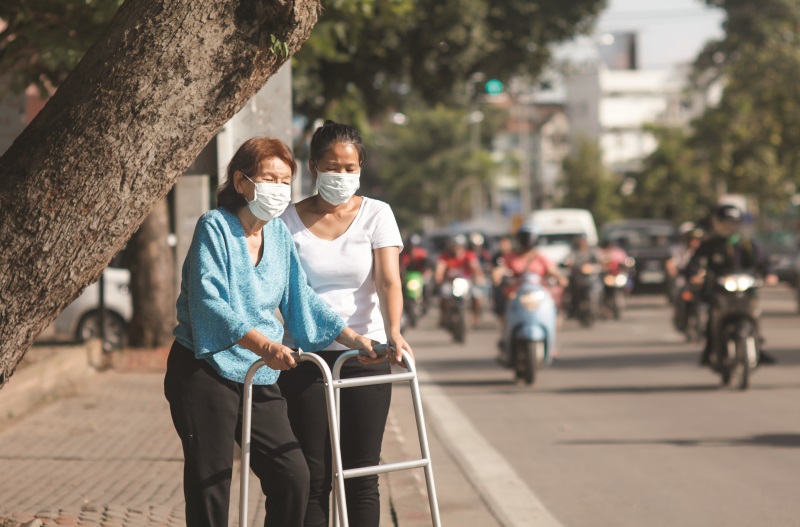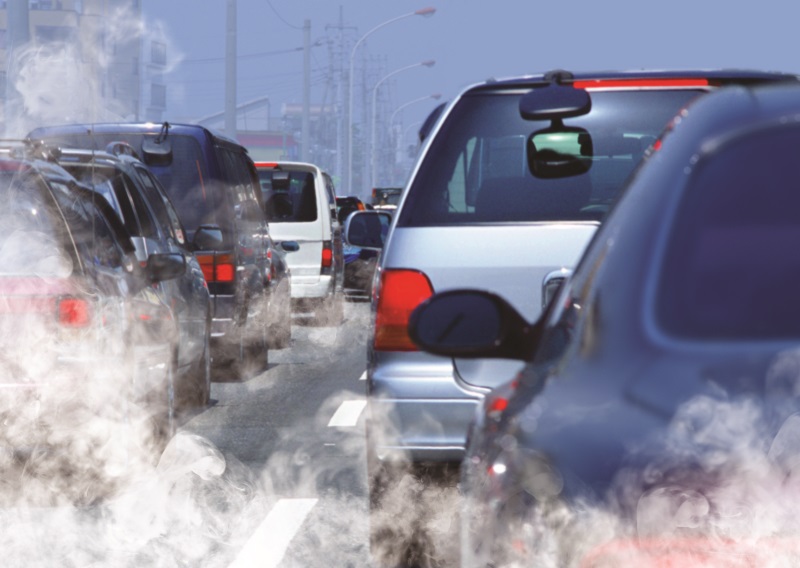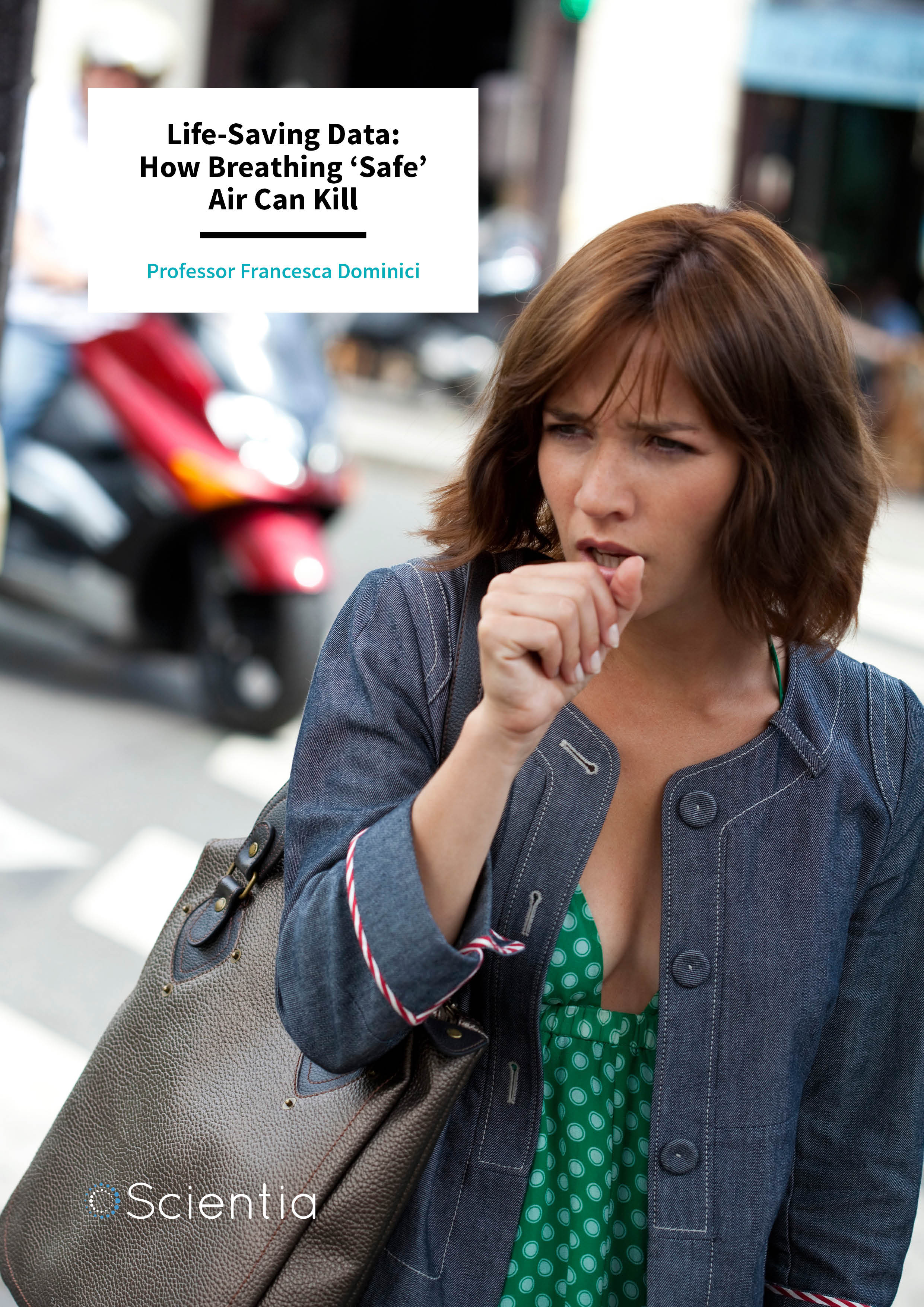Dr Francesca Dominici – Life-Saving Data: How Breathing ‘Safe’ Air Can Kill
Air pollution can have serious health impacts. However, until now, the link between air pollution and death had not been comprehensively shown in the US, especially for rural areas and underrepresented populations. Using data science methodologies, Dr Francesca Dominici and her team at Harvard University have robustly demonstrated the adverse – and sometimes fatal – effects of air pollution at an unprecedented level of spatial and temporal detail.
Death from Air Pollution
While air pollution is frequently considered a nuisance, it is unthinkable to most that we can die from it. Yet this is exactly what happened in late October 1948, when a wall of thick smog descended on Donora, a mill town in Pennsylvania. Like pollution from cars today, the Donora residents were used to smoke spewing from the smokestacks of nearby zinc and steel mills, so they went about their normal routines, unaware of the danger that surrounded them.
By the evening of Oct 29th, people walking outside could not even see their hands in front of their faces. Susan Gnora, a 62-year old resident, started to gasp and cough. She died the next day. It is estimated that 6,000 people fell ill and at least 20 people were killed in one of the worse air pollution disasters in US history. Donora’s 1948 historic ‘killer smog’ transformed our perception of air pollution as an annoyance to potential killer. Unfortunately, air pollution still kills, with 3.3 million annual premature deaths globally (representing 5.86% of global deaths) attributable to outdoor air pollution.
In the US, improvements in air quality historically began in 1963 with the Clean Air Act. The Environmental Protection Agency (EPA), established in 1970, altered the Clean Air Act to include the National Ambient Air Quality Standards (NAAQS), which set exposure limits for six major air pollutants. Fine particulate matter, defined as inhalable particles with a particle size of less than 2.5 µm (PM2.5), is one of the major NAAQS-regulated pollutants. In the US, the main contributors to PM2.5 include different modes of transportation and coal-based electricity generation.
‘The current understanding is, the Environmental Protection Agency is setting safety standards and if pollution is below that standard, everyone is safe. That’s basically not what the scientific evidence is saying.’

From the 1970s onwards, hundreds of articles have shown a correlation between PM2.5 and adverse health outcomes, such as mortality (number of deaths) in urban populations and decreased life expectancy. Because of these findings, policy makers have lowered the allowable amount of PM2.5 in the air for NAAQS. The current NAAQS has set an annual limit for PM2.5 levels at 12 µg (micrograms) per cubic metre of air (µg/m3). The aim of the NAAQS is to protect the population, especially vulnerable members who may be especially sensitive to harmful effects of air pollution, such as children or elderly persons. The current threshold was previously updated in 2012 and is to be reviewed every 5 years.
It is predicted that as communities meet the stricter required standards, fewer people will fall ill and die from air pollution. Despite this, one question remains. Are current standards adequate to protect human health in the light of recent scientific data?
Harnessing Data to Understand the Dangers of Air Pollution
One of the pioneers at the forefront of public health research to understand the adverse impacts of air pollution is Dr Francesca Dominici, Professor of Biostatistics at the Harvard T. H. Chan School of Public Health and co-director (alongside Dr David Parkes) of the Harvard Data Science Initiative at Harvard University. Her research is dedicated to understanding the health impacts of various environmental threats through comprehensively analysing large, heterogenous datasets. Her team’s research provides critical scientific evidence needed to inform various health policies worldwide.
Previously, others have published studies investigating the relationship between long-term exposure to PM2.5 and mortality. However, these data only covered well-monitored urban areas and populations with a higher than average socioeconomic status. Consequently, little had been known about long-term health effects of air pollution in smaller cities, rural areas or amongst people with lower income.

To shed much-needed insight into this knowledge gap, Dr Dominici and her team conducted a nationwide study, published in the New England Journal of Medicine, of all Medicare-eligible people living in the US from 2000 to 2012. The 13-year data period (from January 1st, 2000 to December 31st, 2012) covered 61 million people – more than 96% of whom were aged 65 years or older.
Using previously established prediction models and monitoring data from the EPA, she determined the daily PM2.5 and ozone concentrations for nationwide grids that are 1 km by 1 km, thus providing unparalleled spatial and temporal resolution. The massive sample size also allowed for unprecedented accuracy and statistical power in the estimation of pollution-associated mortality amongst racial minorities and disadvantaged people.
Dr Dominici and her team found that each 10 µg/m3 increase in annual exposure to PM2.5 (independent of ozone) is associated with a 7.3% increase in all-cause mortality (risk of death from any cause), which is equivalent to 120,000 fatalities just among people aged 65 or older. Additionally, they discovered that each increase of 10 parts per billion of ozone (molecules of ozone per billion molecules in the air) increases all-cause mortality by 1.1% (leading to 19,000 deaths among the elderly).
Most importantly, when they further analysed subgroups, the team found that men, racial minorities, and Medicaid-eligible persons (i.e. those of low income) had a higher risk of death related to PM2.5 exposure compared to the general population. Moreover, even when PM2.5 concentrations were below the currently allowed 12 µg/m3, there was still a significant association between PM2.5 exposure and death rate. The researchers found no evidence of a safe level of air pollution – a concentration that does not affect mortality – at concentrations as low as 5 µg/m3.
Dr Dominici’s findings strongly suggest that lowering the annual exposure limit to below 12 µg/m3 for PM2.5 will produce important health benefits, especially amongst racial minorities and people with low income. If fine particulate matter was decreased by only 1 µg/m3 across the US, 12,000 lives would be saved annually. If ozone was reduced by one part per billion, an additional 1,900 lives would be saved every year. The data also provide a stark warning – the loosening of current restrictions, accompanied by cuts to the EPA, would have devastating impact on public health.

Even Short-Term Exposure to Air Pollution Can Kill
In the study discussed above, Dr Dominici’s research team revealed the link between long-term exposure (one year or greater) to air pollution and mortality. But what about the effect of short-term (daily or hourly) exposure to PM2.5 or ozone on death rates?
In 2012, the 24-hour NAAQS for PM2.5 was set to 35 µg/m3. For ozone, there was no annual limit, but the 8-hour NAAQS was set to 70 parts per billion. To date, several studies have already revealed that short-term exposures to PM2.5 or ozone are linked to mortality. However, previous datasets primarily covered urban and well-monitored areas. Therefore, Dr Dominici and her team mined the same dataset they used in their long-term exposure study to uncover the potential health impacts of short-term exposure to fine particles and ozone.
For this study, which was published in the Journal of the American Medical Association (JAMA), Dr Dominici and her group restricted their analysis to days with daily air pollution concentrations below the current NAAQS (i.e. below 25 µg/m3 for PM2.5 and 60 parts per billion for ozone), since most days included in the study were already well below the current safety requirements. During the study period, greater than 22 million persons included in the analysis died.
Notably, they found that each 10 µg/m3 increase of PM2.5 was associated with an increase in daily death rate of 1.05%, while each rise in ozone of 10 parts per billion was correlated with a daily death rate of 0.51%. Although these percentages may sound small, Dr Dominici emphasises that the number of deaths add up when the entire population of American seniors is considered. For example, an increase in just 1 µg/m3 in daily PM2.5 would lead to 550 extra deaths per year, equivalent to more than 7,100 premature deaths over the study period. For ozone, an increase in just 1 part per billion of daily ozone would lead to 250 extra deaths per year or 3,250 extra deaths over 13 years.
Furthermore, even when the analysis of daily PM2.5 levels were restricted to below 25 µg/m3, the association between short-term PM2.5 exposure and mortality remained, but was elevated – a similar pattern was observed for ozone. This strongly suggests that air pollution is linked to an increase in daily death rates, even at levels well below currently allowed safety standards. This suggests that the current national air quality standards need to be re-evaluated.

Making a Mark on Global Public Health and Regulatory Policy
Harnessing the power of current computational techniques and sound statistical methodology, Dr Dominici’s ground-breaking and important findings supports the need to regularly revise regulatory policies to account for new scientific data. Her team’s crucial research also shows that there are no ‘safe’ levels of PM2.5 or ozone exposure. The higher the exposure, the higher the risk, even at levels well below current safety requirements. The team’s results thus provide a strong impetus for policy makers to increase the stringency of NAAQS. Loosening environmental restrictions, on the other hand, would have devastating effects on public health.
These investigations may have implications for environmental monitoring and forecasting of pollutant exposure. This would allow sensitive individuals at risk to develop personalised protection strategies, such as staying indoors on heavy pollution days. Nonetheless, these individual-level protections can only complement, not replace, the ultimate solution of pollution controls. Emission controls required by the Clean Air Act have been shown to prevent hundreds of thousands of premature deaths, with economic benefits far outweighing costs.
Dr Dominici also hopes that these compelling findings will cause the public to rethink the decision to dismantle the EPA and cut its research budget. Nevertheless, one thing is clear, Dr Dominici and her team will continue to develop new statistical methods and new data science tools to understand the public health impacts of environment threats and influence policy makers to make needed changes in regulatory policy, saving countless lives in the future.
Meet the researcher

Professor Francesca Dominici
Department of Biostatistics
Director Harvard Data Science Initiative
Harvard T. H. Chan School of Public Health
Harvard University
Boston, MA
USA
Professor Francesca Dominici completed her PhD in statistics at the University of Padua, Italy, in 1997. Afterwards, she worked at Johns Hopkins Bloomberg School of Public Health at Johns Hopkins University for a number of years, starting with her postdoctoral training and culminating in a Professorship position at the Department of Biostatistics. In September 2009, she moved to the Harvard T. H. Chan School of Public Health at Harvard University, where she is currently a Professor of Biostatistics. Alongside Dr David Parkes, she is also the co-director of the Harvard Data Science Initiative. Her pioneering research broadly focuses on developing and advancing methods for the analysis of large, heterogeneous datasets to identity health impacts of environmental threats and inform policy. Through rigorous statistical analyses of terabytes of data, Professor Dominici and her team have provided the scientific community and policy makers with robust evidence on the adverse health effects of air pollution, noise pollution and climate change. Her ground-breaking studies have directly impacted air quality policy, leading to more stringent ambient air quality standards in the US and advanced public health research worldwide.
CONTACT
E: fdominic@hsph.harvard.edu
W: https://sites.sph.harvard.edu/francesca-dominici/
Twitter: @francescadomin8
KEY COLLABORATORS
Qian Di
Antonella Zanobetti
Christine Choirat
Joel Schwartz
FUNDING
The Health Effects Institute
EPA
NIH
REFERENCES
Q Di, Y Wang, A Zanobetti, Y Wang, P Koutrakis, C Choirat, F Dominici and JD Schwartz, Air Pollution and Mortality in the Medicare Population, New England Journal of Medicine, 2017, 376, 2513–2522.
Q Di, L Dai, Y Wang, A Zanobetti, C Choirat, JD Schwartz and F Dominici, Association of Short-term Exposure to Air Pollution With Mortality in Older Adults, Journal of the American Medical Association, 2017, 318, 2446–2456.

![]()

